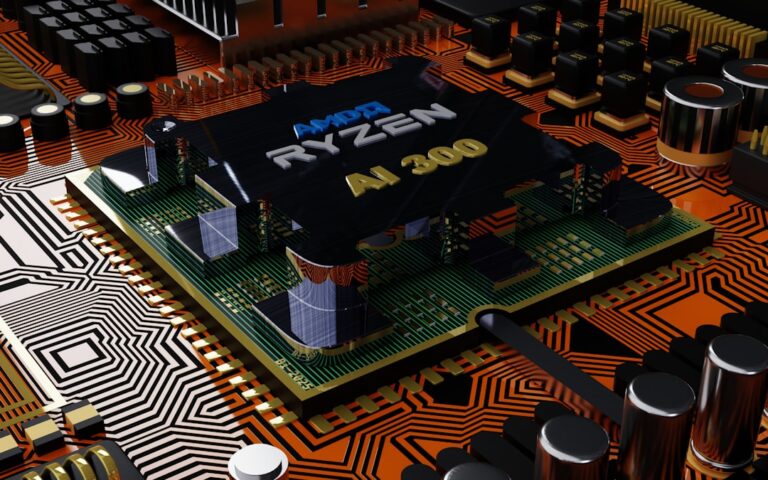Nanotechnology is a multidisciplinary field that manipulates matter at the atomic and molecular scale, typically within the range of 1 to 100 nanometers. This scale is significant because it is where the properties of materials can change dramatically, leading to unique physical, chemical, and biological characteristics. At the nanoscale, materials can exhibit enhanced strength, lighter weight, increased chemical reactivity, and improved electrical conductivity.
The potential applications of nanotechnology span a wide array of industries, including medicine, energy, electronics, agriculture, and environmental science. The origins of nanotechnology can be traced back to the early 1980s when scientists began to explore the manipulation of individual atoms and molecules. The term “nanotechnology” was popularized by physicist Richard Feynman in his famous 1959 lecture “There’s Plenty of Room at the Bottom,” where he envisioned a future where scientists could manipulate matter at the atomic level.
Since then, advancements in imaging techniques, such as scanning tunneling microscopy (STM) and atomic force microscopy (AFM), have enabled researchers to visualize and manipulate nanoscale materials with unprecedented precision. As a result, nanotechnology has emerged as a transformative force across various sectors, promising innovations that could redefine our understanding of materials and their applications.
Key Takeaways
- Nanotechnology involves the manipulation of materials at the nanoscale, leading to unique properties and applications.
- In medicine, nanotechnology is used for drug delivery, imaging, and diagnostics, leading to more targeted and effective treatments.
- Nanotechnology in energy includes the development of more efficient solar cells, energy storage devices, and fuel cells.
- In electronics, nanotechnology enables the creation of smaller, faster, and more efficient devices such as transistors and memory storage.
- Nanotechnology in agriculture focuses on improving crop yield, nutrient delivery, and pest control through nanomaterials and nanosensors.
- Nanotechnology in environmental remediation involves the use of nanomaterials for water purification, air filtration, and soil remediation.
- Nanotechnology in manufacturing leads to the development of stronger, lighter, and more durable materials for various industries.
- Challenges in nanotechnology include safety concerns, ethical implications, and the need for standardization, while the future holds promise for continued innovation and advancement in various fields.
Nanotechnology in Medicine
In the realm of medicine, nanotechnology is revolutionizing diagnostics, drug delivery, and therapeutic interventions. One of the most promising applications is in targeted drug delivery systems. Traditional drug delivery methods often result in systemic side effects and limited efficacy due to the inability to target specific cells or tissues.
However, nanoparticles can be engineered to deliver drugs directly to diseased cells, minimizing side effects and enhancing therapeutic outcomes. For instance, liposomes and polymeric nanoparticles can encapsulate chemotherapeutic agents and release them in response to specific stimuli, such as pH changes or the presence of certain enzymes found in tumor microenvironments. Moreover, nanotechnology is playing a crucial role in the development of advanced imaging techniques that enhance disease detection and monitoring.
Quantum dots, which are semiconductor nanoparticles, have emerged as powerful fluorescent markers for imaging applications. They can be used in conjunction with various imaging modalities to provide real-time visualization of cellular processes. For example, researchers have utilized quantum dots to track cancer cells in vivo, allowing for a better understanding of tumor progression and metastasis.
Additionally, nanosensors are being developed to detect biomarkers associated with diseases at extremely low concentrations, enabling early diagnosis and personalized treatment strategies.
Nanotechnology in Energy

The energy sector is another area where nanotechnology is making significant strides. One of the most pressing challenges facing the world today is the need for sustainable energy solutions. Nanotechnology offers innovative approaches to enhance energy efficiency and develop renewable energy sources.
For instance, nanomaterials are being utilized in solar cells to improve their efficiency and reduce production costs. Quantum dots and nanostructured materials can be incorporated into photovoltaic cells to enhance light absorption and conversion efficiency. This advancement could lead to more affordable solar energy solutions that are accessible to a broader population.
In addition to solar energy applications, nanotechnology is also being explored for energy storage solutions. Lithium-ion batteries, which are widely used in portable electronics and electric vehicles, can benefit from the incorporation of nanomaterials. By using nanoscale materials for electrodes, researchers have been able to increase the surface area available for electrochemical reactions, resulting in batteries with higher capacity and faster charging times.
Furthermore, supercapacitors made from carbon nanotubes exhibit remarkable energy storage capabilities and rapid charge-discharge cycles, making them ideal for applications requiring quick bursts of energy.
Nanotechnology in Electronics
| Metrics | Data |
|---|---|
| Market Size | 6.5 billion in 2020 |
| Projected Growth | Expected to reach 14.4 billion by 2027 |
| Applications | Transistors, memory devices, displays, sensors |
| Advantages | Improved performance, reduced size, lower power consumption |
The electronics industry has been significantly impacted by advancements in nanotechnology, particularly in the miniaturization of components and the enhancement of performance characteristics. As devices become smaller and more powerful, the demand for nanoscale materials has surged. One notable application is in the development of transistors made from nanomaterials such as graphene and carbon nanotubes.
These materials possess exceptional electrical conductivity and mechanical strength, enabling the creation of faster and more efficient transistors that can operate at lower power levels. Moreover, nanotechnology has facilitated the development of flexible electronics, which are poised to revolutionize consumer electronics and wearable technology. By utilizing nanoscale materials that can be integrated into flexible substrates, manufacturers can create lightweight and bendable devices without compromising performance.
For example, organic light-emitting diodes (OLEDs) made from nanoscale materials can be used in flexible displays that conform to various shapes and surfaces. This innovation opens up new possibilities for applications ranging from smart clothing to rollable screens.
Nanotechnology in Agriculture
Agriculture is another field where nanotechnology is making a significant impact by enhancing crop productivity and sustainability. One of the primary applications is in precision agriculture, where nanosensors are employed to monitor soil health and crop conditions in real-time. These sensors can detect nutrient levels, moisture content, and even pest infestations at a granular level, allowing farmers to make informed decisions about irrigation and fertilization practices.
By optimizing resource use based on precise data, farmers can increase yields while minimizing environmental impact. Additionally, nanotechnology is being utilized to develop advanced agrochemicals that improve crop resilience against pests and diseases. Nanoparticles can be engineered to deliver pesticides or fertilizers more effectively by ensuring targeted release at specific sites within plants or soil.
For instance, nanoencapsulation techniques allow for controlled release of nutrients over time, reducing the need for frequent applications and minimizing runoff into water bodies. This approach not only enhances crop health but also contributes to sustainable agricultural practices by reducing chemical inputs.
Nanotechnology in Environmental Remediation

The environmental sector has also embraced nanotechnology as a means to address pollution and restore contaminated sites. Nanomaterials possess unique properties that make them effective agents for environmental remediation. For example, nanoparticles can be used to adsorb heavy metals from contaminated water sources or degrade organic pollutants through catalytic reactions.
Zero-valent iron nanoparticles have gained attention for their ability to reduce toxic contaminants such as trichloroethylene (TCE) into less harmful substances through chemical reactions. Furthermore, nanotechnology is being explored for air purification applications. Nanoscale materials can be incorporated into filters or coatings that capture airborne pollutants at a molecular level.
For instance, titanium dioxide nanoparticles are known for their photocatalytic properties; when exposed to UV light, they can break down volatile organic compounds (VOCs) present in indoor air. This technology holds promise for improving indoor air quality in urban environments where pollution levels are a growing concern.
Nanotechnology in Manufacturing
In manufacturing processes, nanotechnology is driving innovations that enhance product quality and production efficiency.
For example, carbon nanotubes are being used as reinforcing agents in composite materials to create lightweight yet strong components for various applications ranging from aerospace to automotive industries.
Nanostructured coatings can impart properties such as scratch resistance, anti-corrosion effects, or self-cleaning capabilities to surfaces. These coatings are particularly valuable in industries where product longevity is critical.
For instance, self-cleaning surfaces made with nanoscale materials can reduce maintenance costs while improving hygiene standards in healthcare settings.
Challenges and Future of Nanotechnology
Despite its vast potential, nanotechnology faces several challenges that must be addressed for its continued advancement and widespread adoption. One significant concern is the potential health and environmental risks associated with the use of nanomaterials. The unique properties of nanoparticles may lead to unforeseen interactions with biological systems or ecosystems that require thorough investigation before widespread implementation.
Regulatory frameworks need to evolve alongside technological advancements to ensure safety while fostering innovation. Additionally, there are economic barriers that may hinder the commercialization of nanotechnology-based products. The high cost of research and development combined with the need for specialized equipment can pose challenges for small businesses looking to enter the market.
Collaborative efforts between academia, industry stakeholders, and government agencies will be essential in overcoming these hurdles and promoting sustainable growth within the field. Looking ahead, the future of nanotechnology appears promising as researchers continue to explore new applications and refine existing technologies. The integration of artificial intelligence with nanotechnology could lead to breakthroughs in material design and optimization processes.
As our understanding of nanoscale phenomena deepens, we may witness transformative changes across various sectors that enhance quality of life while addressing global challenges such as climate change and resource scarcity.
Nanotechnology has the potential to revolutionize various industries and fields, including medicine, electronics, and materials science. One related article that delves into the power of visualizing relationships and testing validity is The Power of Venn Diagrams: Visualizing Relationships and Testing Validity. This article explores how Venn diagrams can help us better understand complex relationships and make informed decisions based on logical reasoning. By utilizing tools like Venn diagrams, researchers and scientists in the field of nanotechnology can enhance their problem-solving abilities and drive innovation forward.





















+ There are no comments
Add yours